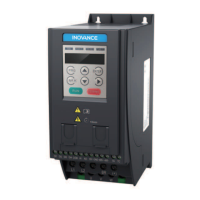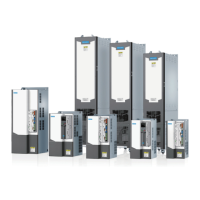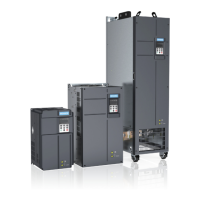Function Application
‑591‑
3.4.12Auxiliary Control
Para. No. Function Default
Value Range Description
A5‑00
DPWM switchover
frequency upper
limit
12.00 Hz
0 to max. frequency (F0‑
10)
The AC drive supports two PWM modes:
CPWM and DPWM. When the running
frequency is higher than A5‑00 (switchover
frequency), the DPWM mode is used. When
the running frequency is lower than A5‑00
(switchover frequency), the CPWM mode is
used. The DPWM mode can improve the AC
drive efficiency, whereas the CPWM mode
can reduce motor noise.
Increasing parameter A5‑00 to max.
frequency will reduce motor noise.
A5‑01
PWM modulation
mode
0
0: Asynchronous
modulation
1: Synchronous
modulation
2: Synchronous
modulation mode 2
3: Synchronous
modulation mode 3
When the result of the carrier frequency
divided by the running frequency is less than
10, output current oscillation or large
current harmonic may occur. To reduce the
current harmonic, set this parameter to 1
(synchronous modulation).
0: Asynchronous modulation
This mode is used when the carrier
frequency is not synchronized with the
signal wave frequency. Usually, the carrier
frequency is kept unchanged, and the
carrier ratio changes with the signal wave
frequency.
1: Synchronous modulation
This mode is used when the carrier
frequency is synchronized with the signal
wave frequency.
Usually, the carrier frequency and signal
frequency change simultaneously, and
therefore the carrier ratio remains
unchanged. In this case, a set number of
transverse SPWM pulses are generated in a
given period, leading to good symmetry of
the equivalent sine wave.
2: Synchronous modulation mode 2
3: Synchronous modulation mode 3
A5‑03
Random PWM
depth
0
0: Random PWM invalid
1 to 10: Random PWM
depth
To reduce motor noise, set A5‑03 to a value
other than 0. A large value means better
effect of noise reduction. However, an
excessively‑large value may affect motor
control. Therefore, set this parameter to 1
first during commissioning and then
increase it by 1 each time based on the field
application.

